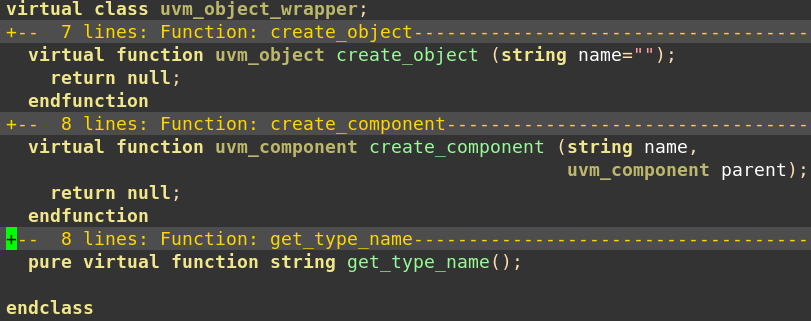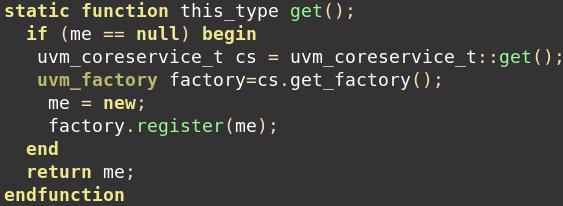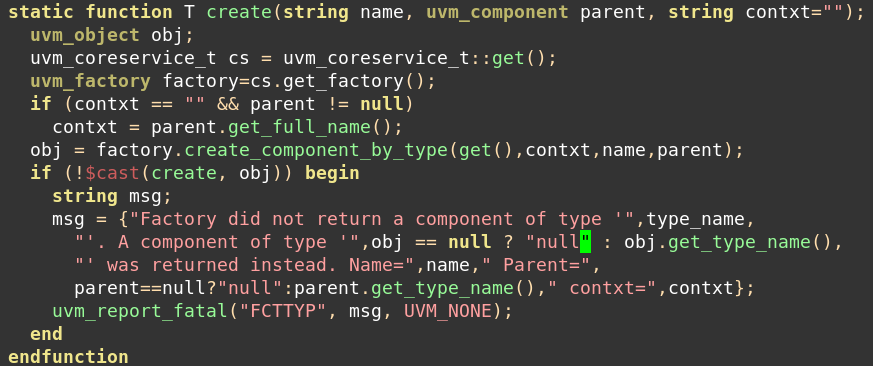registry类主要是为object和component提供一个轻量级的代理(lightweight proxy)来方便factory实现;
registry class从uvm_object_wrapper继承而来
uvm_object_wrapper是一个virtual class,内部包含三个virtual function,为create_object,create_component
get_type_name,留下接口;
不包含任何成员变量;也不从其他class继承而来;

uvm_component_registry:包含两个参数,type和string,在宏调用的时候,一般是相同的;
内部两个static的成员变量:type_name = Tname;
this_type = me; this_type是针对某个参数registry的具体的typedef;
实现function,get_type_name;
static function, get;同时registry到factory中,所以factory中注册的其实都是class对应的static类型的registry class


实现create的两个function:
1)create_component,factory最终调用的create函数,被调用;

2)create函数,得到factory的唯一实例,调用create_component_by_type,contxt可以是parent的path,
static的function

两个override的static的function:
由于registry中,有component的type,所以都是type类型的override;


uvm_object_registry类似;
两个static类型的变量,两个create的function,两个overide的function。
除了调用uvm提供的宏,也可以自定义type_id的typedef,来完成factory的注册等操作。
class mycomp extends uvm_component;
typedef uvm_omponent_registry #(mycomp, "mycomp") type_id;
endclass
这样的操作,缺少get_type,get_object_type的function。